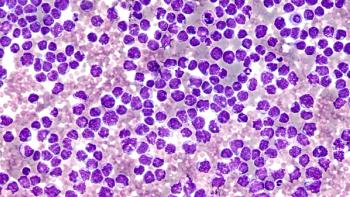
Spotlighting Health Disparities for Black Americans With Multiple Myeloma and Potential Solutions
Black Americans with multiple myeloma face disparities in incidence of disease, survival outcomes, and use of evidence-based treatment, which may be exacerbated by socioeconomic factors.
Amid growing incidence of MM, Black Americans are particularly at risk. These populations have been shown in
Researchers of an analysis published in the
“An estimated 6910 new cases and 2360 deaths from MM are expected among Black Americans annually, comprising 20% of all new cases and 18% of total deaths per year from MM in the United States. This is an enormous burden considering 1 in every 5 patients diagnosed with MM in the United States is Black,” they noted.
“Understanding and targeting the causes of disparities is critical to achieve more equitable treatment delivery and outcomes for all patients with MM.”
Outcomes of MM vary greatly in Black Americans, said the study authors. Data from Surveillance Epidemiology, and End Results (SEER) registries from 1973 to 2005 have confirmed superior relative survival for Blacks compared with Whites, and SEER data from 2007 to 2013 showed superior MM specific survival, but not overall survival (OS), as well.
However, these data were based on defined populations with a high access to health care and well-developed registration systems. Black Americans are more likely to live in low-income areas that are exposed to higher levels of environmental pollution and psychosocial stressors, which affect the access and utilization of health care services.
Incremental use of autologous stem cell transplant (ASCT) and novel agent–based therapies over the past 2 decades has significantly improved survival rates among White Americans with MM. But survival rates for Black patients have lagged, noted researchers, and the observed disparity is increasing.
“If evidence-based treatments were to be equally utilized, we would expect Black Americans to have universal improvement in survival…The sources of racial disparities in MM are multilayered and emanate from interplay of biological drivers, differential influence of genetic ancestry, and how these factors interact with and are shaped by other socioeconomic determinants of health care delivery and utilization.”
For Black Americans, the difference in MM outcomes compared with Whites may be explained by failure from the health care system to provide suitable cancer care. Underutilization of evidence-based treatment, receipt of suboptimal therapy, or limited access to treatment have all been cited to affect Black patients with MM, who also face a notable delay in the start of treatment.
A
Poor enrollment of Blacks in clinical trials is also of major concern. Of the 2896 patients enrolled in 9 national cooperative group clinical trials on newly diagnosed MM, only 18% were non-White. And for pivotal trials leading to US regulatory approval of MM drugs, Black Americans constituted a mere 4.5% of all patients.
“The inadequate representation of Black patients on clinical trials could perpetuate outcome disparity because their unique biology of the host and tumors is not accounted for while building patient treatment pathways.”
Beyond access to care, one factor that has been shown to disproportionately affect Black Americans is obesity, which is associated with incidence and mortality of MM. Data from National Health and Nutrition Examination Survey suggest that approximately 48% of non-Hispanic Blacks have a body mass index (BMI) in the obese range, compared with 34.5% among non-Hispanic Whites.
Black Americans are also disproportionately affected by related disorders such as metabolic syndrome, diabetes mellitus, and cardiovascular diseases.
“Although causal inferences cannot be made from observational studies, the findings support strategies to increase awareness of MM risk among Black Americans with obesity, as well as show the need for prospective studies to determine whether weight reduction can reduce MM risk.”
Addressing these disparities call for multidisciplinary efforts that fully engage all stakeholders, noted the study authors. The International Myeloma Foundation (IMF) was mentioned as an organization uniquely poised to address disparities due to its international reach.
Guided by an IMF council comprised of key stakeholders in the MM field, including patients, advocates, physicians, and other health care providers, the organization’s African American Initiative aims to improve short- and long-term outcomes of Black patients by engaging the community, educating health care providers, and supporting patients.
“Developing protocols to improve access to quality care for individuals from diverse populations will be critical to improve the quality of MM care for all patients. Disparities will not be eliminated without the implementation of system changes that promote health equities, universal health insurance coverage, and access to high-quality care for all,” concluded researchers.
Reference
Bhutani M, Lonial S, Mikhael J. Disparities in multiple myeloma among African Americans. J Natl Med Assoc. 2022 Dec 22;S0027-9684(22)00167-5. doi:10.1016/j.jnma.2022.10.001
Newsletter
Stay ahead of policy, cost, and value—subscribe to AJMC for expert insights at the intersection of clinical care and health economics.













































